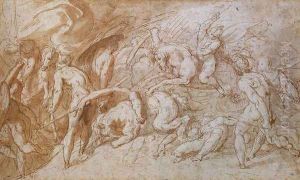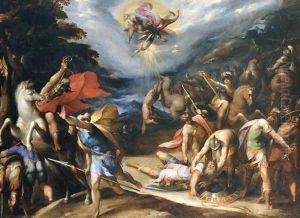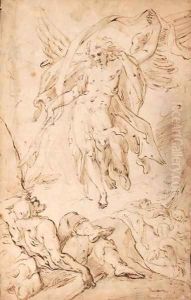Hans Speckaert Paintings
Hans Speckaert was a Flemish Renaissance painter who is not as widely known as some of his contemporaries but made significant contributions to the art world during the 16th century. Born around 1540 in Brussels, then part of the Habsburg Netherlands, he was part of a cultural region that was influenced by both Northern Renaissance and Italian Renaissance styles.
Speckaert likely received his artistic training in his native land, but like many artists of his time, he traveled to Italy to further his education in the arts. He moved to Rome around 1565, where he was influenced by the works of prominent Renaissance artists such as Raphael and Michelangelo. It was in Rome that Speckaert honed his skills and developed a style characterized by precise drawing and a clear, bright palette.
Although not much is documented about his patrons or the exact trajectory of his career, Speckaert's works suggest he was adept at both religious and mythological subjects. His drawings, many of which survive, exhibit a keen attention to anatomical accuracy and dynamic composition, and they were often preparatory works for engravings or larger paintings.
Unfortunately, Speckaert's career was cut short when he died in 1577, at the age of about 37. The body of work he left behind, however, provides insight into the cross-cultural artistic exchanges between the Low Countries and Italy during the Renaissance. His works are held in various collections and continue to be studied for their contribution to the transition between the Renaissance and Mannerist styles.


